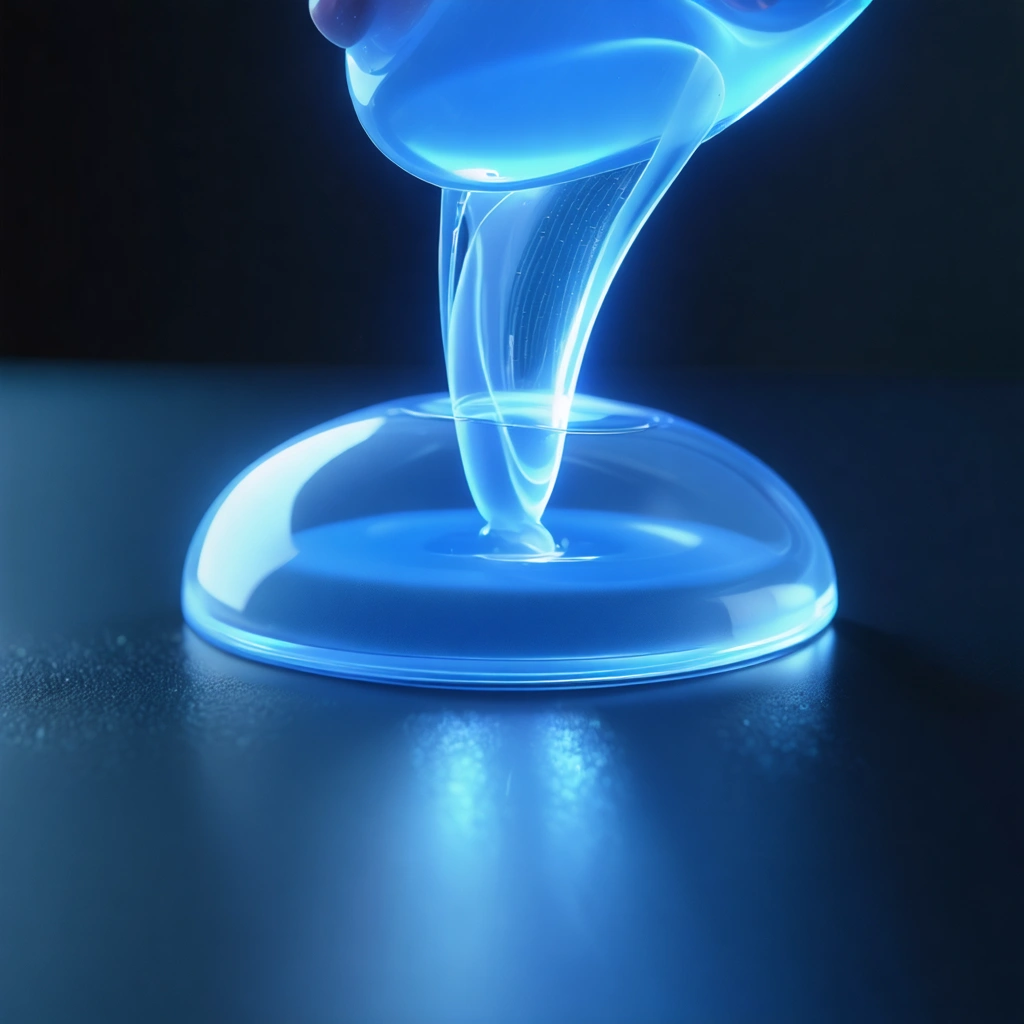
Introduction: The Dawn of a New Material Era
The realm of material science has witnessed groundbreaking advancements that continuously push the boundaries of what is possible. Among these innovations, the emergence of a self-healing hydrogel marks a significant milestone. Researchers have successfully engineered a gel that mirrors the natural self-repairing properties of human skin while maintaining the high stiffness required for robust applications. This novel material not only overcomes the limitations inherent in previous artificial gels but also sets the stage for transformative applications across various industries, including medicine, robotics, and beyond.
Research Background and Technological Breakthroughs
Historical Context and Challenges
Historically, artificial gels were designed to emulate either the robustness seen in rigid materials or the flexibility and self-repair capabilities found in biological tissues. However, achieving both simultaneously was a formidable challenge. Traditional hydrogels, while flexible, often lacked sufficient stiffness, making them unsuitable for certain applications such as load-bearing sensors or structural components in soft robotics. Conversely, gels with high rigidity typically did not possess the dynamic self-healing properties necessary for long-term durability in fluctuating environments.
Innovative Structural Design
The breakthrough emerged when a team of researchers introduced a unique structural design within the hydrogel. By carefully engineering the molecular network and integrating dynamic bonds that mimic biological repair mechanisms, the scientists achieved a gel that replicates the self-healing process of human skin. Key technical highlights include:
- Advanced polymer network synthesis
- Integration of reversible dynamic bonds
- Enhanced mechanical stiffness without compromising flexibility
This duality in performance is essential for applications where both durability and adaptability are paramount.
Applications and Business Implications
Potential Markets and Uses
The introduction of this self-healing hydrogel opens numerous avenues for commercial exploitation. The material’s unique properties make it ideally suited for:
- Drug Delivery Systems: As the hydrogel can mimic human skin, it offers a promising platform for localized, sustained drug release, minimizing side effects while offering enhanced therapeutic outcomes.
- Wound Healing: Its biocompatibility coupled with robust self-repair capabilities can significantly improve recovery times and reduce the risk of infection.
- Soft Robotics and Sensors: The combined properties of stiffness and flexibility are ideal for creating wearable sensors and soft robotic components that require resilience under mechanical stress.
- Artificial Skin: For prosthetics and robotics, this hydrogel provides an unmatched level of realism and durability, bridging the gap between synthetic materials and natural tissues.
Market Dynamics and Strategic Advantages
From a business perspective, the development of self-healing hydrogels represents a disruptive technology with the potential to redefine several market sectors. Enterprises that adopt this innovative material can expect:
- Cost Efficiency: Reduction in material replacement expenses due to the gel’s inherent self-healing capabilities.
- Enhanced Product Lifespan: Durable materials result in lower maintenance and higher reliability in products, from medical devices to robotic components.
- Competitive Differentiation: Companies can leverage this advanced material to create next-generation products that outperform traditional alternatives.
Moreover, a detailed cost-benefit analysis indicates considerable long-term savings and improved ROI for industries willing to embrace this technology.
Economic Impact and Future Directions
Economic Analysis and Investment Opportunities
Investors and corporations are paying close attention to the promising applications of self-healing hydrogels. In an economic landscape that is increasingly competitive and innovation-driven, this technology represents a strategic investment. Key economic benefits include:
| Factor | Impact |
|---|---|
| Reduced Manufacturing Costs | Fewer replacements and lower maintenance expenses |
| Market Expansion | Opportunities in high-demand sectors such as healthcare and robotics |
| Innovation Leadership | Differentiation and competitive edge in technology markets |
| Sustainability | Lower environmental impact due to the longevity and durability of the material |
This table showcases how self-healing hydrogels can streamline production processes and open up new investment channels, benefiting both established and emerging businesses.
Future Research and Commercialization Prospects
Looking ahead, ongoing research is expected to refine the properties of these hydrogels further, potentially expanding their applicability. Future research initiatives may focus on:
- Optimizing the synthesis process for better scalability
- Enhancing the environmental stability of the material under extreme conditions
- Integrating functional additives to tailor the gel for specific industrial needs
- Developing cost-effective production techniques to facilitate mass-market adoption
In the era of digital transformation and rapid technological advancement, companies that invest in innovative materials like self-healing hydrogels are likely to lead the market. Strategic partnerships among academic institutions, startups, and industry giants will be pivotal in accelerating commercialization and fostering a future where smart materials drive progress across multiple sectors.
Conclusion
Synthesizing Innovation and Practical Applications
The advent of a self-healing hydrogel that balances exceptional stiffness with skin-like resiliency marks a notable junction in materials science. This breakthrough material not only represents a triumph of engineering but also an opportunity for transformative business growth. By bridging the gap between durability and flexibility, the hydrogel stands as a testament to modern innovation and practical ingenuity.
For industries ranging from healthcare to robotics, this technology heralds a new era of efficiency, reduced maintenance costs, and enhanced product performance. As market dynamics continue to evolve, companies that are quick to adopt and invest in such advanced materials will likely secure a competitive edge, setting new standards for excellence in technology and business strategy.
In summary, the self-healing hydrogel symbolizes not only a scientific innovation but also a beacon of economic opportunity, offering a harmonious blend of rigorous engineering and real-world applicability. This material is poised to redefine market expectations and propel a wide range of industries into a future marked by resilience, sustainability, and unprecedented performance.




